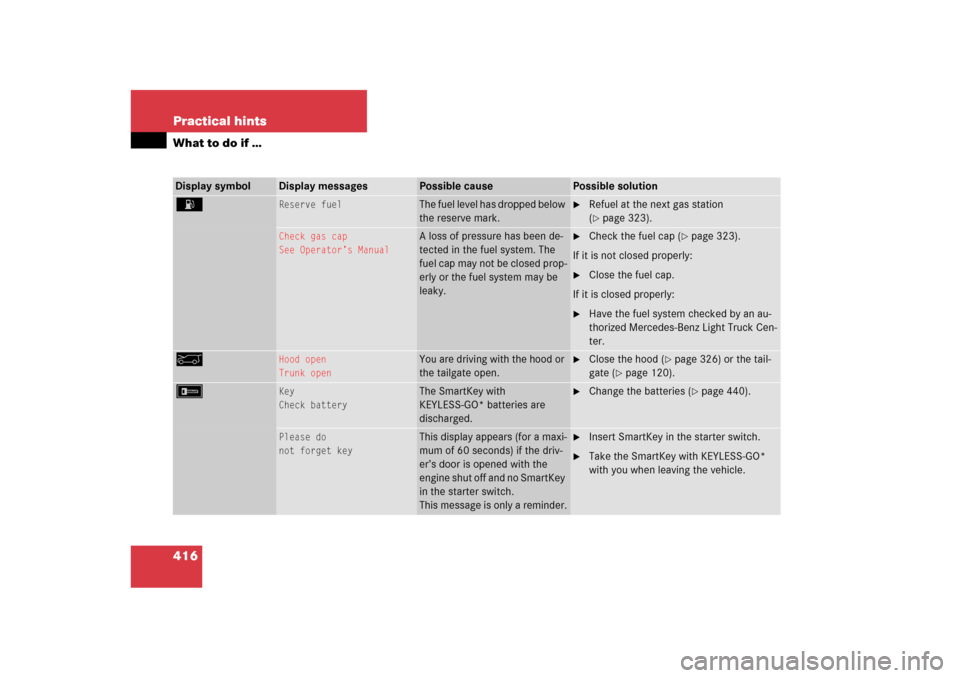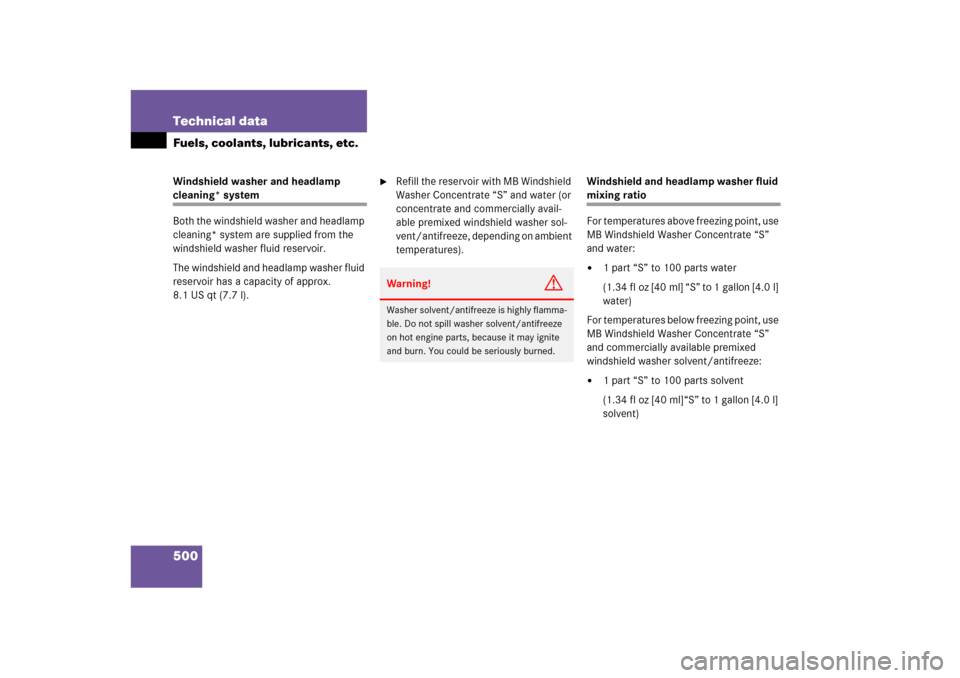Page 367 of 539

366 OperationTires and wheelsGVW (G
ross V
ehicle W
eight)
The GVW comprises the weight of the
vehicle including fuel, tools, spare wheel,
installed accessories, passengers and
cargo and, if applicable, trailer tongue
load. The GWV must never exceed the
GWVR indicated on the certification label
located on the driver’s door B-pillar.
GVWR (G
ross V
ehicle W
eight R
ating)
This is the maximum permissible vehicle
weight of the fully loaded vehicle (weight of
the vehicle including all options, passen-
gers, fuel, and cargo and, if applicable,
trailer tongue load). It is indicated on
certification label located on the driver’s
door B-pillar.
Kilopascal (kPa)
The metric unit for air pressure. There are
6.9 kPa to 1 psi; another metric unit for air
pressure is bars. There are 100 kilopascals
(kPa) to 1 bar.Maximum load rating
The maximum load in kilograms and
pounds that can be carried by the tire.
Maximum loaded vehicle weight
The sum of curb weight, accessory weight,
vehicle capacity weight and production
options weight.
Maximum tire inflation pressure
This number is the greatest amount of air
pressure that should ever be put in the tire
under normal driving conditions.
Normal occupant weight
The number of occupants the vehicle is
designed to seat, multiplied by
68 kilograms (150 lbs).
Occupant distribution
The distribution of occupants in a vehicle
at their designated seating positions.Production options weight
The combined weight of those installed
regular production options weighing over
5 lbs (2.3 kilograms) in excess of those
standard items which they replace, not
previously considered in curb weight or
accessory weight, including heavy duty
brakes, ride levelers, roof rack, heavy duty
battery, and special trim.
PSI (P
ounds per s
quare i
nch)
A standard unit of measure for air pressure
-> bar, kilopascal (kPa).
Recommended tire inflation pressure
Recommended tire inflation pressure
listed on placard located on driver’s door
B-pillar for normal driving conditions.
Provides best handling, tread life and
riding comfort.
Page 387 of 539
386 Practical hintsWhat to do if …Problem
Possible cause
Suggested solution
?
(USA only)
±
(Canada only)
The yellow engine malfunction
indicator lamp comes on while
driving.
A loss of pressure has been
detected in the fuel system.
The fuel cap may not be closed
properly or the fuel system
may be leaky.
�
Check the fuel cap (
�page 323).
If it is not closed properly:
�
Close the fuel cap.
If it is closed properly:
�
Have the fuel system checked by an
authorized Mercedes-Benz Light Truck
Center.
Your fuel tank is empty.
�
After refueling start, turn off and
restart the engine three or four times in
succession.
The limp-home mode is canceled. You do
not need to have your vehicle checked.
Page 417 of 539

416 Practical hintsWhat to do if …Display symbol
Display messages
Possible cause
Possible solution
A
Reserve fuel
The fuel level has dropped below
the reserve mark.
�
Refuel at the next gas station
(�page 323).
Check gas cap
See Operator’s Manual
A loss of pressure has been de-
tected in the fuel system. The
fuel cap may not be closed prop-
erly or the fuel system may be
leaky.
�
Check the fuel cap (
�page 323).
If it is not closed properly:
�
Close the fuel cap.
If it is closed properly:
�
Have the fuel system checked by an au-
thorized Mercedes-Benz Light Truck Cen-
ter.
a
Hood open
Trunk open
You are driving with the hood or
the tailgate open.
�
Close the hood (
�page 326) or the tail-
gate (
�page 120).
F
Key
Check battery
The SmartKey with
KEYLESS-GO* batteries are
discharged.
�
Change the batteries (
�page 440).
Please do
not forget key
This display appears (for a maxi-
mum of 60 seconds) if the driv-
er’s door is opened with the
engine shut off and no SmartKey
in the starter switch.
This message is only a reminder.
�
Insert SmartKey in the starter switch.
�
Take the SmartKey with KEYLESS-GO*
with you when leaving the vehicle.
Page 494 of 539
493 Technical data
Fuels, coolants, lubricants, etc.
�Fuels, coolants, lubricants, etc.
Capacities
Vehicle components and their respective
lubricants must match.Therefore only use products tested and
approved by Mercedes-Benz.Please refer to the Factory Approved
Service Products pamphlet, or inquire at
your Mercedes-Benz Light Truck Center.
Model
Capacity
Fuels, coolants, lubricants, etc.
Engine with oil filter
ML 350
8.5 US qt (8.0 l)
Approved engine oils
ML 500
9.1 US qt (8.5 l)
Approved engine oils
Automatic transmission
9.6 US qt (9.0 l)
MB Automatic Transmission Fluid
Transfer case single speed
0.5 US qt (0.5 l)
MB Automatic Transmission Fluid
Front axle
1.2 US qt (1.1 l)
Hypoid gear oil
Rear axle
1.2 US qt (1.1 l)
Hypoid gear oil
Power steering
approx. 1.3 US qt (1.2 l)
MB Power Steering Fluid
Front wheel hubs
approx. 1.5 oz (43 g) each
High temperature roller bearing grease
Page 495 of 539
494 Technical dataFuels, coolants, lubricants, etc.
Model
Capacity
Fuels, coolants, lubricants, etc.
Cooling system
ML 350
approx. 10.2 US qt (9.5 l)
MB Anticorrosion/Antifreeze
ML 500
approx. 10.7 US qt (10.0 l)
MB Anticorrosion/Antifreeze
Fuel Tank
including a reserve of
ML 350, ML 500
25.0 US gal (95.0 l)
approx. 3.5 US gal (13.0 l)
Premium unleaded gasoline:
Minimum Posted Octane 91
(Avg. of 96 RON/86 MON)
Air conditioning system
R-134a refrigerant and special PAG lubricant oil
(never R-12)
Windshield washer and
headlamp cleaning*
system
8.1 US qt (7.7 l)
MB Windshield Washer Concentrate
1
1Use MB Windshield Washer Concentrate “S” and water for temperatures above freezing or MB Windshield Washer Concentrate “S” and commercially available
premixed windshield washer solvent/antifreeze for temperatures below freezing. Follow suggested mixing ratios (�page 500).
Page 499 of 539

498 Technical dataFuels, coolants, lubricants, etc.Coolant system design and coolant used
determine the replacement interval. The
replacement interval published in the
Maintenance booklet is only applicable if
MB 325.0 anticorrosion/antifreeze solu-
tion or other Mercedes-Benz approved
products of equal specification (see
Factory Approved Service Products
pamphlet) are used to renew the coolant
concentration or bring it back up to the
proper level.
To provide important corrosion protection,
the solution must be at least 45% anticor-
rosion/antifreeze (equivalent to freeze
protection to approx. - 22°F [-30°C]). If
you use a solution that is more than 55%
anticorrosion/antifreeze (freeze protec-
tion to approx. - 49°F [-45°C]), the engine
temperature will increase due to the lower
heat transfer capability of the solution.
Therefore, do not use more than this
amount of anticorrosion/antifreeze.If the coolant level is low, water and
MB 325.0 anticorrosion/antifreeze should
be used to bring it up to the proper level
(have cooling system checked for signs of
leakage). Please make sure the mixture is
in accordance with label instructions.
The water in the cooling system must meet
minimum requirements, which are usually
satisfied by normal drinking water. If you
are not sure about the water quality, con-
sult an authorized Mercedes-Benz Light
Truck Center.
Page 501 of 539

500 Technical dataFuels, coolants, lubricants, etc.Windshield washer and headlamp cleaning* system
Both the windshield washer and headlamp
cleaning* system are supplied from the
windshield washer fluid reservoir.
The windshield and headlamp washer fluid
reservoir has a capacity of approx.
8.1 US qt (7.7 l).
�
Refill the reservoir with MB Windshield
Washer Concentrate “S” and water (or
concentrate and commercially avail-
able premixed windshield washer sol-
vent/antifreeze, depending on ambient
temperatures).Windshield and headlamp washer fluid
mixing ratio
For temperatures above freezing point, use
MB Windshield Washer Concentrate “S”
and water:�
1 part “S” to 100 parts water
(1.34 fl oz [40 ml] “S” to 1 gallon [4.0 l]
water)
For temperatures below freezing point, use
MB Windshield Washer Concentrate “S”
and commercially available premixed
windshield washer solvent/antifreeze:
�
1 part “S” to 100 parts solvent
(1.34 fl oz [40 ml]“S” to 1 gallon [4.0 l]
solvent)
Warning!
G
Washer solvent/antifreeze is highly flamma-
ble. Do not spill washer solvent/antifreeze
on hot engine parts, because it may ignite
and burn. You could be seriously burned.
Page 511 of 539

510 IndexBrake pads
Message in display 408
Brakes 300
Warning lamp 383
Break-in period 298
Bulbs, replacing 443
Additional turn signals 443
Backup lamps 444
Brake lamps 444
Fog lamps 443
Front fog lamp 449
Front lamps 443
High beam 443
License plate lamps 444, 451
Low beam 443
Parking, standing lamp 443
Rear fog lamps 450
Rear side marker lamp bulbs 450
Side marker lamp 443
Side marker lamps 444
Turn signal lamps 443, 444C
CAC (Customer Assistance Center) 501
Calibrating
Compass 171
California
Important notice 11
Call priority
Tele Aid* 287
Calling up
Range (distance to empty) 178
Service indicator 372
CAN system 501
Capacities
Fuels, coolants, lubricants, etc. 493
Cargo compartment
Fuse box in 479
Interior lighting 145
Lamp 147
Tie-down rings 260
Cargo compartment cover* 265
Closing 265
Installing 265
Opening 265
Removing 265
Cargo tie-down rings 260Carpet
Cleaning 379
Catalytic converter 320
CD player
Operating 158
Center console 27
Lower part 28
PASS AIR BAG OFF indicator
lamp 393
Upper part 27
Central locking
Automatic 125
Switch 126
Switching on/off
(control system) 172
Unlocking from inside 126
Central locking switch 126
Certification label 484
Changing
SmartKey setting 173
Charging
Vehicle battery 469
CHECK ENGINE malfunction
indicator lamp 385, 386